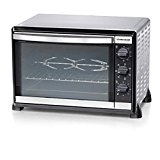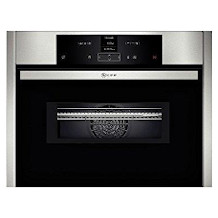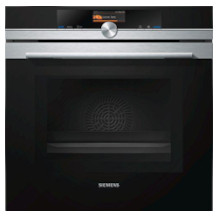Induction cooktop purchasing advice: how to choose the right product
- What You Need to Know
- An induction hob contains a copper coil that generates an electromagnetic field.
- Pans and pots react to this field and get hot very quickly.
- Only induction-compatible cookware can be used on an induction hob.
- The hob itself is not heated during the induction process.
Induction – high-tech in the kitchen
Anyone who wants to modernise their kitchen quickly comes across the term induction. Visually, induction hobs hardly differ from a ceramic hob. The fundamental difference lies in the interior and in the way it works. An electric hob heats itself up and passes the heat radiation on to the cookware. With induction, on the other hand, the heat is generated directly in the bottom of the pan. A copper coil sits under the hobs and generates an electromagnetic field as soon as it is energised. Pots, pans and other dishes are thus heated quickly and in an energy-saving way, which considerably reduces cooking time. Induction hobs also score in the area of safety. After all, it is not the hob itself that gets hot, but only the cookware. Such a hob can only be switched on if there is also induction-compatible cookware on it. This is a safety aspect, but it also means that new cookware may have to be purchased. Sometimes an induction hob produces buzzing and humming noises that can be annoying to people and especially pets. Nevertheless, the pleasant and fast induction cooking is becoming more and more popular. It is considered efficient and safe. If you are thinking of buying such a hob, you should ask yourself which size is suitable and which type of operation is preferred.
Pro points
- Faster heating than other types of hob
- Particularly energy-saving
- Automatic pot detection
- Coloured display of residual heat
- Convenient operation via touchpad
- Easy cleaning
Drawbacks
- Somewhat more expensive than ceramic hobs
- Not suitable for all pots and pans
- Noise during use
How an induction hob works
Visually, induction hobs differ little from other hobs. Here, too, the surface consists of a glass ceramic field on which various cooking zones are marked. Underneath the fields are induction coils made of copper wire that generate an electromagnetic field when switched on. A cookware with a magnetic base is heated directly because the base converts the energy of the magnetic field into heat. Consequently, if a pot is not magnetic, nothing happens and the corresponding cooking surface cannot be switched on.
When cooking with induction, the magnetic field is concentrated only on the bottom of the cookware, so this cooking method is safe and energy-saving. No one can burn themselves on a hot hob now, only the return heat from the pans heats the hob slightly. Overflowing liquids also no longer burn in so quickly.
Is induction dangerous?
The way the induction cooker works makes you sit up and take notice. Can’t a magnetic field be dangerous? We encounter magnetic fields everywhere in everyday life. Televisions, hoovers, drills and mobile phones generate such a field. As a rule, there is no danger from them. However, if electromagnetic radiation reaches a certain intensity, it can have a negative effect on health. The magnetic field of induction fields is indeed particularly strong, but remains below a defined limit. It is therefore not dangerous to the body. However, it can affect things on the body that are magnetic: Jewellery can heat up and devices such as smartwatches can be disturbed. In the worst case, a pacemaker is slightly affected by the hob. Metal objects should therefore not come closer than 40 centimetres to the induction hob.
What to look for when buying an induction cooktop
The criteria to consider when buying an induction cooktop depend on the type of household and the intended use. For someone who cooks a lot, the number of hot plates plays an important role, regardless of the size of the household. Singles who don’t see themselves as hobby cooks or who travel a lot don’t need a large hob and may even be served by a mobile induction hob.
The following criteria should play a role when purchasing an induction hob:
- Available space in the kitchen
- Size of household
- Frequency of cooking
- Cooking quantities (number of pots and pans)
- Functions of the hob
Choosing the right type and size
First of all, you need to decide on a type of hob. Glass ceramic hobs can be divided into two categories: Firstly, there are combination units that work and are connected together with an oven. They do not have their own controls and are controlled by the cooker. On the other hand, there are self-sufficient hobs that are connected to the cooker socket. These hobs do not require a cooker, but contain all the controls and regulators themselves. Consequently, these hobs can be installed almost anywhere in the kitchen. The space underneath can then be used for drawers and cupboard units.
The second point is size: unlike many other electrical appliances, there are no standardised dimensions for induction cooktops. They vary from manufacturer to manufacturer. However, some dimensions are more common than others. The width of the fields usually corresponds to a tens digit, i.e. 30, 60, 70 or 90 centimetres. The smallest fields have a width of 30 centimetres, the largest are about 90 centimetres wide. The most common size is 60 centimetres.
| Size of hob (width x depth) | Details |
|---|---|
| 30 x 60 centimetres | Suitable for single households, two hot plates |
| 60 x 60 centimetres | Frequently used standard size, equipped with four hot plates |
| 90 x 60 centimetres | s For large households and all those who like to cook a lot, often contain an integrated smoke outlet |
An important measurement is the thickness of the hob. For this, orientate yourself on the thickness of the worktop: the thinner it is, the smaller the built-in dimension should be. To ensure the right cut-out, many manufacturers include a mounting template with the hobs, which can be used to make the exact cut-out required.
Caution when connecting an induction cooktop
Only those who have the appropriate knowledge should connect a hob themselves. Electricity in general is not to be trifled with – and a hob needs a high-voltage connection. For safety reasons, the hob should be connected by a professional, at a cost of 35 to 50 euros. This way you are on the safe side – also financially. If damage is caused by a hob that you have connected yourself, the insurance company will not pay.
Features and functions
The most characteristic feature of an induction cooktop is that pots and pans can be heated up particularly quickly, which significantly shortens the cooking process. But that is by no means all. The high-tech hobs come with a whole range of functions.
Comfort features
Boost function: One of the most practical functions of an induction hob is the boost or power function. It is used for boiling water or searing meat. For a short time, the cooking zone is set to full power. The bottom of the pan gets hot within a few seconds and water also boils in a few minutes. This function makes a kettle in the kitchen superfluous.
Automatic pan detection: The magnetic mode of operation of the induction hob allows so-called pan detection. The hob never heats the entire plate, but only the places where a pot or pan is located. It does not react to other magnetic products in the kitchen. This is also a safety aspect. But: The sensors of the pot detection react to larger metals; therefore, no pot lid should be placed on the hob.
Bridge function: The bridge function allows two zones behind or next to each other to be connected, for example for very large pots or roasters. In this way, even large quantities of meat can be seared very quickly.
Keep warm function: This is a very small cooking level, just for keeping food warm – without the risk of burning anything.
Timer: The timer is part of the basic equipment of induction cooking units. After all, the right cooking time determines whether food is successful or not. Professional appliances allow you to set a timer for each plate. Less expensive models only allow a timer for the entire appliance.
Memory: With this function, cooking levels and cooking times can be saved for a dish and recalled at any time.
Safety features
The safety aspect is very important for hobs with induction. Heat is only generated when suitable cookware is placed on the cooking zones. Only the pot, pan and their contents get hot; the hob itself heats up slightly at most due to the residual heat. Induction hobs can be electronically locked so that they cannot be switched on by unauthorised persons.
Overheating protection: The elements inside an induction hob can become very hot under certain circumstances. This is particularly the case if a plate is operated at a high level for a long time. Unfavourable crockery can also lead to high heat development. To prevent overheating, this function automatically switches off the hob in case of extreme load.
Automatic switch-off: In various situations, the hob switches off automatically for safety reasons. This is the case, for example, if the hob is switched on but no cooking level is selected, or if the hob is left on for too long. Even if an empty pot is heated on the hob, it switches off automatically after a while. If the field is covered with spilled food or an object, it switches off until it is removed. In such cases, the error message F appears on the display.
Child lock: The child lock prevents the hotplates from being switched on by children and other unauthorised persons. The lock function is also useful for cleaning. This prevents settings from being activated by mistake. The childproof lock remains active even after the hob has been switched off, until it is deactivated again. The letter L indicates that the child lock is active.
Residual heat indicator: Although the plates do not get hot themselves, the residual heat indicator is still important because the glass under the cookware heats up. After intensive use, a cooking zone can remain hot for a few minutes. As long as the field is hot, the display shows H. Some models have a two-stage display that shows a small h when the heat is lower. The display switches off as soon as the plate is cool enough again.
How much do induction cooktops cost?
If you want to switch to induction, you also have to think about the costs. In the meantime, induction hobs have come closer in price to gas and electric alternatives. Nowadays, hobs with the basic equipment are only slightly more expensive than conventional ceramic hobs. Very inexpensive hobs are already available from around 200 euros. However, the price differences between manufacturers are enormous. Brand-name appliances with luxury features can cost several thousand euros – the more special functions, the more expensive the appliance.
Important manufacturers
AEG is one of the best-known manufacturers. The brand belongs to the Swedish Electrolux Group. Currently, 70 models are offered. Most of them have a width of 60 centimetres and 4 cooking zones. Most of them are self-sufficient built-in models. However, the brand also offers a number of stove-mounted hobs. The AEG range extends from the cheapest model with only two cooking zones for around 700 euros to the special model for around 2,700 euros.
The Bosch, Siemens and Neff brands belong to BSH Hausgeräte, Europe’s largest household appliance manufacturer, based in Munich. Siemens offers the largest selection with 76 models, starting at 950 euros for a hob with four zones. At Bosch, a model with four zones can be found from around 1,000 euros. Neff also has hobs in a similar design starting at 1,000 euros. Models from these brands can sometimes be found at much lower prices at many online retailers. Since the brands belong to the same group, there are also no major differences between the induction cooktops. Mostly, they differ by operating elements or details such as a stainless steel frame. Basically, only the brand label is different. With Constructa, BSH Hausgeräte carries a brand that offers significantly cheaper induction hobs in the mid-price segment.
What hob variants are there?
A basic feature of a good cooktop is the sensible and practical division of the cooking zones. With induction cooktops, you can choose between different designs: Cooktops with defined zones and those with free zones. The budget and cooking habits play a role in the choice. Induction cooktops with fixed zones are generally cheaper. However, if you like to use pots and pans of different sizes and want to move them flexibly, you are better off with adjustable cooking zones. The ultimate is a hob with full-surface induction that can be used completely freely.
Standard induction cooktops
Just like ceramic hobs, standard induction hobs have individual round cooking zones, each of which can accommodate a pot or pan. Induction coils and sensors are located under the cooking zones. The number of cooking zones depends on the size of the hob. Many hobs have multi-circuit cooking zones, which allow the heating circuit to be enlarged to fit the cookware. On the hob, these zones look like several circles lying inside each other, also known as two- or three-circle zones. For cooks who like to braise meat, a roasting zone that can be switched on is important. For models with fixed zones, the cookware should be positioned as centred as possible on a cooking zone that corresponds to its size. Pots that are too small not only cause energy to be lost, they also generate higher stray electromagnetic fields.
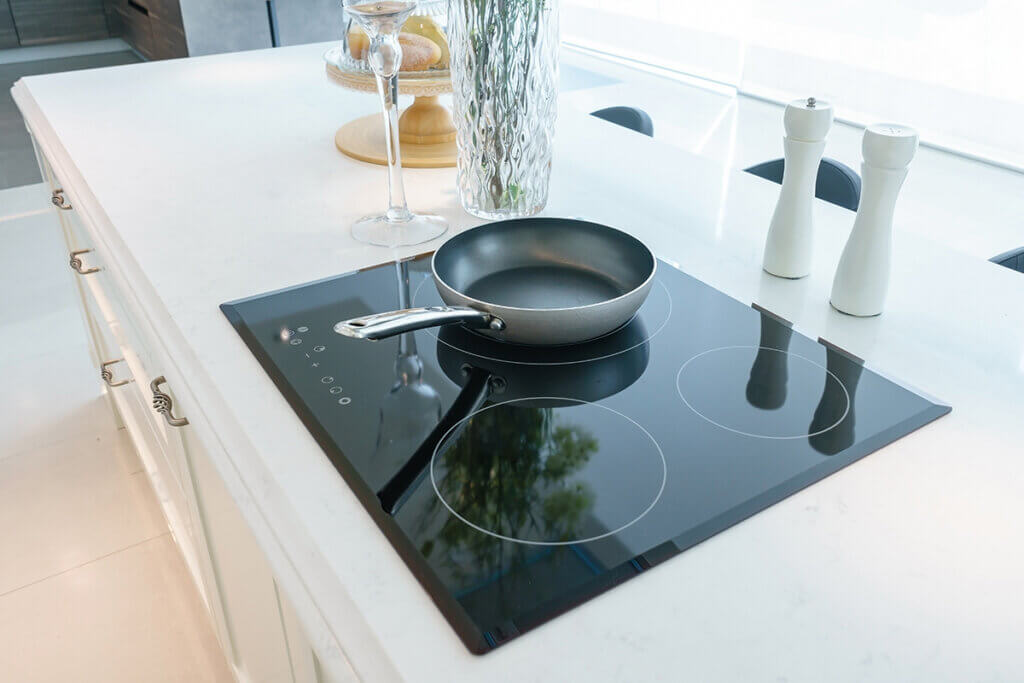
Induction cooktops with flex zones
Cooktops with flex zones promise even more convenience than multiple heating circuits. Within these zones, the cookware can be moved and positioned flexibly. All you have to do is follow the flex zone marking. The continuous zone offers enough space and automatically recognises the size, number and shape of the dishes used. This means that a roaster or pots of different sizes can easily be placed on the induction hob.
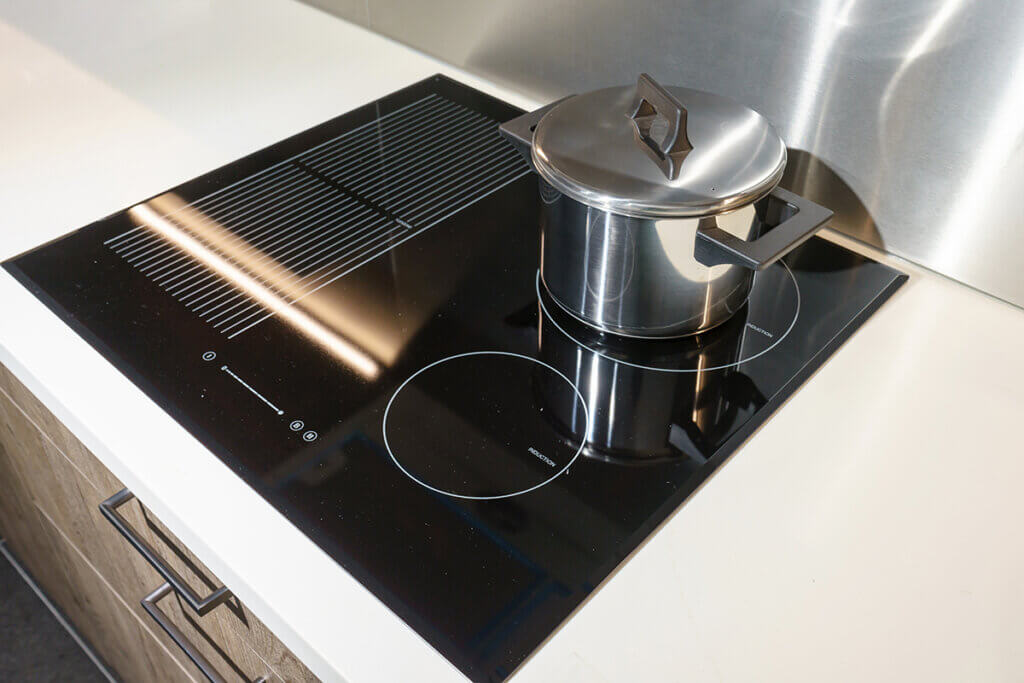
Cooktops with surface induction
Finally, there are hobs with full-surface induction. Here the name says it all: there are induction coils not only under marked zones, but under the entire field. The sensors detect the size and position of pans and pots and start supplying heat. Since the cookware can be heated anywhere on the glass ceramic, these fields offer the greatest ease of use. They are particularly practical for cooks who want to prepare elaborate recipes or menus with several courses.
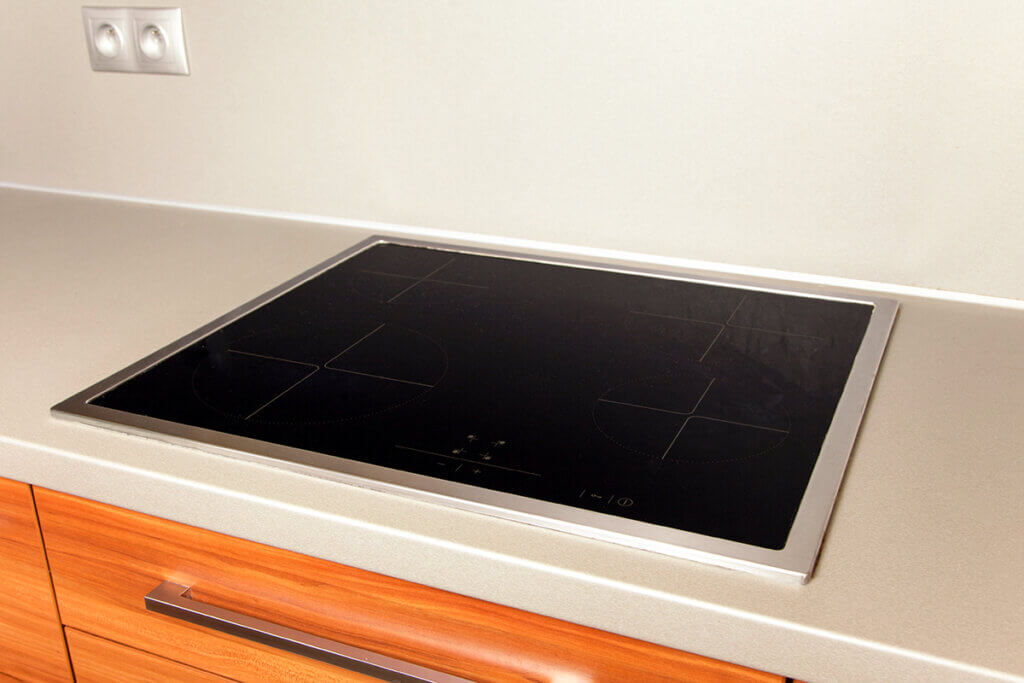
Single hot plates
Even those who travel a lot or have only a very small kitchen do not have to do without modern cooking comfort with induction. Essentially, the mobile single hot plates are no different from the larger models. They also have a few additional functions. The biggest difference is that the small induction plates are operated via the normal household socket. This means that you can cook with induction wherever there is a power socket.
How many watts should an induction hob have?
Quickly explained: Watt
A watt (W) is a unit of power. Power is the rate at which energy is produced or consumed. For example, a 100-watt light bulb uses energy at a higher rate than a 60-watt light bulb. It needs a stronger current flow to function. Energy consumption is often expressed in kilowatts (kW). One kilowatt is equal to 1,000 watts.
Standard induction hobs with four cooking zones have power ratings of 1,200 to 3,600 watts. As a rule, hobs with induction offer booster functions to speed up the cooking process. If the function is switched on, the appliances can reach a power consumption of 4,000 or even 7,500 watts. Almost every model has an automatic switch-off function that automatically switches off the booster function after a certain time. The actual usable power of the hob also depends on the quality of the cookware used. Ferromagnetic pots and pans with a flat bottom are best suited.
Tips for use and cleaning
Knobs and dials are not to be found on most induction cooktops, because they are operated via flat elements that are embedded directly in the glass ceramic surface. The individual elements only need to be touched. This works similarly to a smartphone without pressure; instead, the surface reacts to light stimuli and contact with the conductive skin. The hob can thus be conveniently wiped clean without having to consider the control surface and without the risk of accidentally triggering functions. For those who do not want to do without classic rotary controls, however, there are models equipped accordingly.
Those who previously had an electric or gas cooker in the kitchen will have to get used to the new induction cooker. Especially at the beginning, you should observe how food cooks on the field. By stirring, it is easy to find out how hot the food is. Then the appropriate heat level can be selected. For the new, fast cooking method, a feeling must first be developed so that the food does not accidentally burn.
Probably everyone has cut ingredients while the oil was heating up in the pan. But on an induction cooktop, frying fat and oils heat up so quickly that all the ingredients should already be ready. It takes some getting used to, to find the right moment to put the food into the pan.
Good to know: This is why the induction hob makes noise
It is not only the short cooking times that require some getting used to. If you’ve never used an induction cooktop before, you might be surprised by the humming noises. But don’t worry, in most cases these are completely normal. The selected cooking level can be a cause of the buzzing. The higher the level, the louder the noise. Pots can also make a humming noise. If they are placed empty on the hob, the energy cannot be released and the cookware begins to vibrate. Noise is therefore not a sign of poor quality.
Cleaning the induction hob
A big advantage of the induction hob is that the glass ceramic itself does not get particularly hot. So overcooked food, sauces or milk do not burn into the surface. Instead, the contamination can simply be wiped away. Although the hobs remain cool, a healthy amount of caution should be exercised here, because the cookware gives off return heat to the plate. Many induction cooktops have a lock function and can then be cleaned at your leisure. The best way to do this is with a damp microfibre cloth. If you want the hobs to shine particularly brightly, we recommend using a commercially available glass cleaner. Light grease stains can be easily removed with a damp sponge and a little washing-up liquid. Lemon juice and warm water with vinegar have also proved effective. Stubborn stains can be removed with a ceramic hob scraper.
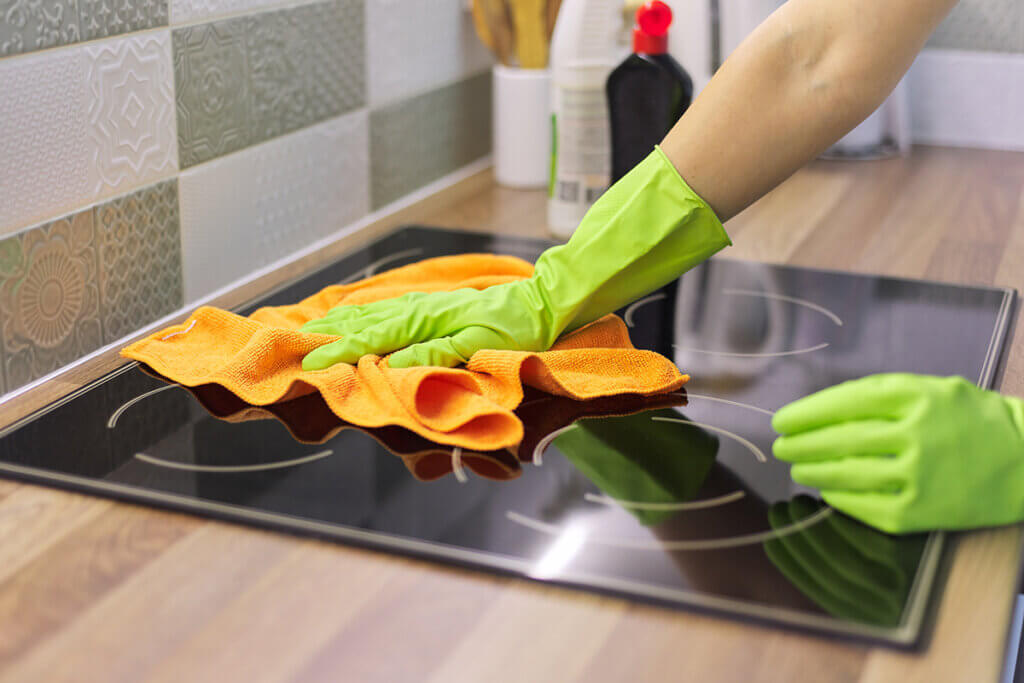
Caution with power cleaners
Do not use harsh cleaning or scouring agents if you want your induction cooktop to be sparkling clean. The aggressive agents can make the hob dull and unattractive.
Suitable cookware
An induction hob can only be used with suitable cookware. A magnet can be used to test whether a pot or pan will work on the hob. However, it is quite possible that a tried and tested pan can no longer be used on the new hob. In such cases, new cookware must be purchased.
Ideal: With frying pans and pots that have the induction symbol, the power of the hob can be used optimally. The symbol is reminiscent of a magnetic coil. For cookware that is used on an induction hob, the following applies in principle: The thicker and flatter the base, the better the heat storage and thus the efficiency.
Very good: pans and pots made of cast iron or steel enamel can be used on an induction cooktop without any problems. Some stainless steel pots that have a ferromagnetic base are also suitable for the induction hob.
Unsuitable: Cooking utensils made of copper, cast aluminium and aluminium are not magnetic and therefore cannot be used on the induction hob. Many stainless steel pots are also not suitable for induction.
Cooking utensils: It is advisable to use non-metallic cooking utensils made of plastic or wood.
Practical: The induction plate
If you do not want to do without a particular kitchen utensil, you can continue to use it with an induction plate that serves as an adapter. There are also special induction-compatible dishes. This allows food to be heated in the plate on the cooker.

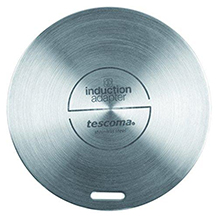
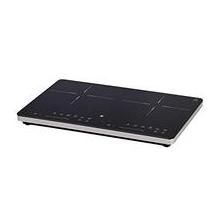
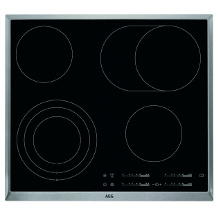
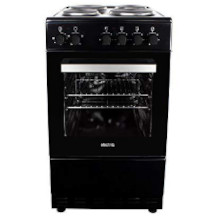
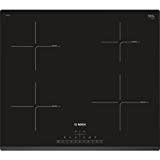
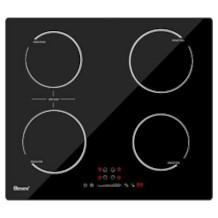
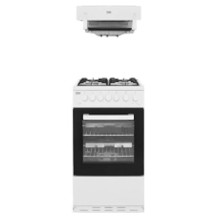
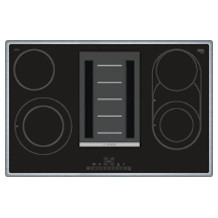
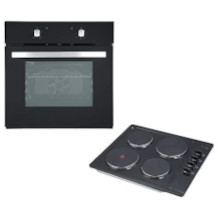
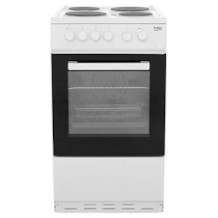
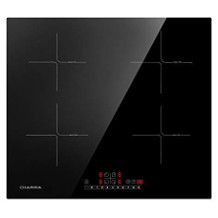
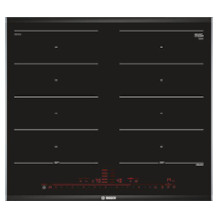
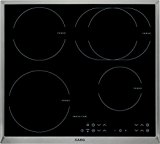

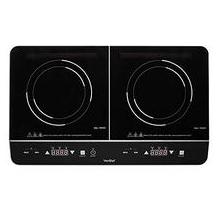
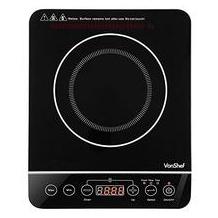
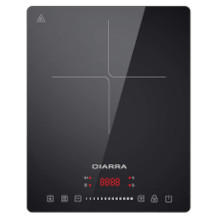
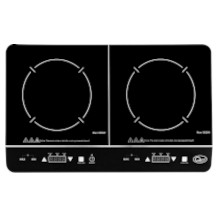

 1,834 reviews
1,834 reviews




